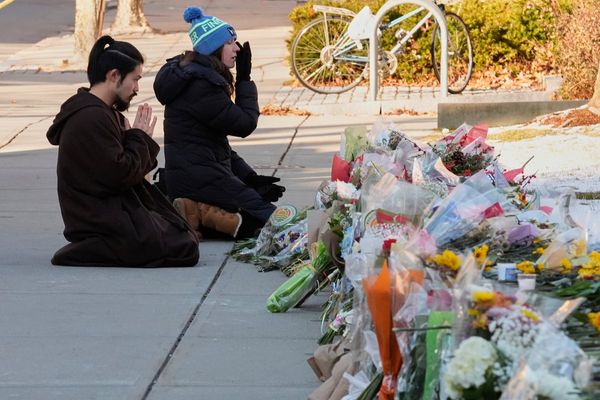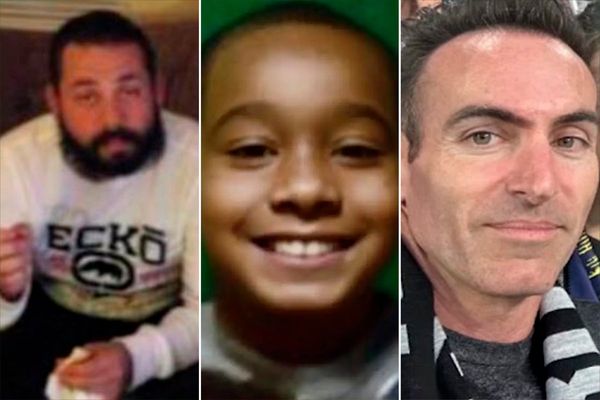
OAKMONT, Pa. – Two months after Rory McIlroy finally mastered the Masters, the U.S. Open U.S. Open-ed him. McIlroy began the first round by birdieing two of the first three holes and finished it about a week later. That’s an exaggeration, but only a slight one: As McIlroy finished the eighth hole, his 17th hole of the day, the clock on the scoreboard near the green read 12:58. His group teed off at 7:40. That’s a five-hour-and-18-minute round, for those napping at home, and McIlroy, Justin Rose and Shane Lowry still had another 23 minutes to go.
Oakmont is a strict, stuffy parent of a golf course: I know it’s hot and I know you’re tired, but you’re going to finish what you started, and don’t you dare loosen your tie. If ever golf needed a mercy rule, this is the week. McIlroy made the turn at 2 under, but he spent the back nine, as many do at Oakmont, hacking at the rough like his sand wedge was an axe.
His tee shot on the par-5 5th hole drifted right and landed in the Witness Protection Program. Marshals needed some time to find it, and when they did, McIlroy needed some time to figure out what to do with it. His caddie, Harry Diamond, smiled and gestured backward. McIlroy took a whack and left it in the rough, above a bunker. He sized that up with a wedge in hand, decided to hit a longer iron instead, and Oakmont tsk-tsk-ed and took away his screen time. He barely advanced the ball.
McIlroy somehow saved bogey there. But he had already bogeyed No. 1, and then he bogeyed Nos. 6 and 7, and then on No. 8, his ball did the only sensible thing and found some shade. Alas, it did so in thick grass. The scoreboard alerted everyone to the ongoing misery: The hole had forced 16 bogeys, one double or worse, and surrendered but a single birdie.
McIlroy whacked. His ball sneezed forward. He whacked at it again. He made double-bogey, finished with a 4-over 74, and then said—let me make sure I quote him accurately here—nothing.
McIlroy did not speak to the media, just as he did not speak to the media after any of his four rounds at last month’s PGA Championship. It is an unfortunate habit, but one that he shares with enough of his peers that some context is needed.
Golf has a structural problem. Nobody is telling players they need to talk to reporters—or if they are, they aren’t very convincing. As long as two tours are competing to see who can make players feel more loved, neither will force them to talk. The USGA, which is just another four-letter word to most players anyway, won’t go there, either.
But here at Oakmont, the USGA set up its designated flash-interview area in a place where players won’t ever go unless somebody makes them. If the USGA had placed the interview area directly between where players sign their scorecards and the clubhouse, forcing players to walk through it, the act of blowing us off would be more overt, and players might be more inclined to talk. Instead, they can walk quickly past, as McIlroy did, and we are left asking a USGA official to ask his agent if he will talk, and that dance rarely ends with a yes. Agents work for players. It is not realistic to expect a person to tell his employer, at the end of a long workday, that he must do what he does not actually have to do.
McIlroy can speak for himself, and on some days he actually does, but this is my take on his first round, after walking most of it with him:
After his most recent driver reached retirement age, he finally settled on a new one (a TaylorMade Qi10) and he hit some accurate bombs with it. He played some really good golf on a difficult course. (How difficult? Lowry holed out for eagle from the third fairway and still shot a nine-over 79.) But this week requires a sustained level of extreme concentration that McIlroy is not quite ready to muster.
He arrived here openly acknowledging that he has been riding a green-jacket high.
“I've always been a player that struggles to play after a big event, after I win,” he said Tuesday. “I always struggle to show up with motivation the next week. I think, chasing a certain goal for the better part of a decade and a half, I think I'm allowed a little bit of time to relax a little bit. But here at Oakmont, I certainly can't relax this week.”
I don’t think he relaxed. But he didn’t execute as well as he usually does. He had a wedge in his hands on the second fairway, but he left it short. It was an uncommitted swing, a more benign version of the wedge he hit into the water on the 13th hole at Augusta National on Sunday. He got a little lucky with his pitch on No. 2; he ran up to mark it before it crept back down the hill, as Lowry’s ball had just done. He tried to do too much with his third shot on No. 4. He looked downwind and downhill from the tee at the par-3 6th hole, told Diamond he would “play it off the left” to fade it back to the right pin placement, and he hit a draw into the left bunker instead. He hit a really poor first putt on No. 7 and missed the comebacker.
It was a long day; it’s a tough game; these were difficult conditions. If McIlroy does not hit another fairway this year, his 2025 will still be a resounding success. He is self-aware enough to know it and honest enough to admit it sapped a bit of his competitive drive lately. You can say that Tiger Woods would have remained hell-bent on destroying the field in every tournament, but McIlroy is not Tiger, he never claimed to be Tiger, and if he wants to soak up the achievement of finishing the career Grand Slam, then good for him. A life is not part of a career. A career is part of a life.
Also: It’s not entirely true. The closest analog to McIlroy’s Masters win was Woods’s Augusta triumph in 2019, and when Tiger showed up to Bethpage Black for the PGA the next month, he was not remotely ready to tackle that beast. Tiger looked completely and understandably worn out. He shot a first-round 72, nine strokes behind Brooks Koepka, who was in his group. Woods missed the cut, and if you don’t remember that, it’s because it doesn’t matter.
Everybody hits bad shots and has bad weeks. Only a few can coax true greatness out of themselves. McIlroy did it in April and he will do it again. Just (probably) not this week.
This article was originally published on www.si.com as Rory McIlroy’s Rough Opening Round at U.S. Open Is Reminder That Greatness Is Hard to Sustain.







